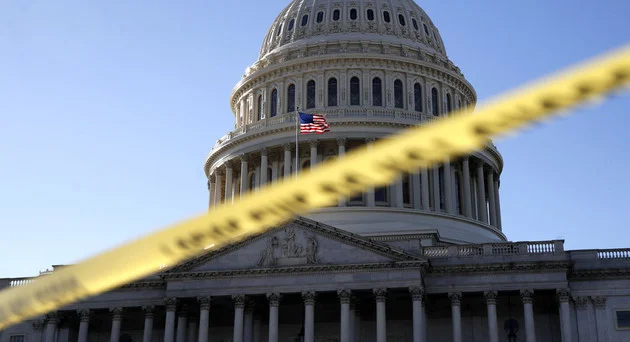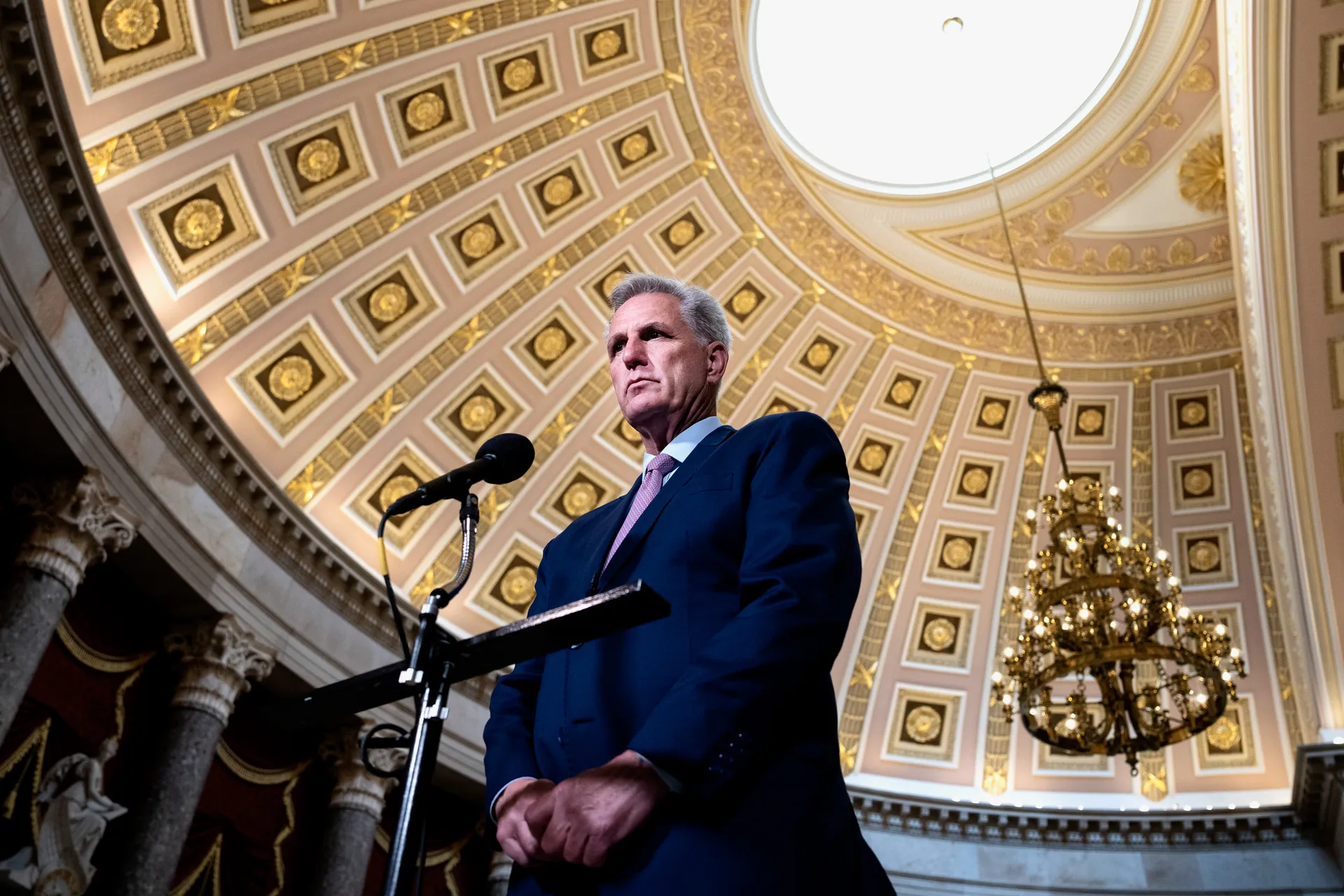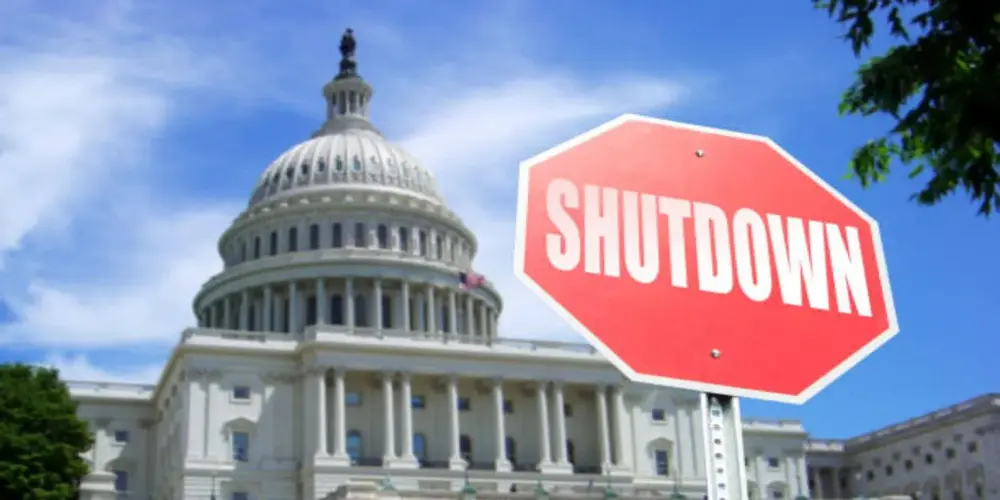Introduction
WASHINGTON – The United States is on the brink of another government shutdown, which has shifted from a mere possibility to a growing likelihood. As the clock counts down, with Congress locked in a bitter gridlock unable to reach a funding agreement for the federal government, the implications of a shutdown loom large. It’s a scenario that would touch the lives of millions of Americans and disrupt numerous critical services.
Understanding Government Shutdowns
Why Do Government Shutdowns Occur?

A government shutdown happens when Congress doesn’t approve the required annual spending bills that allocate funds to government programs and agencies. This situation arises when both chambers of Congress, the House, and the Senate, need help to reach a consensus on allocating funds or specific spending provisions for certain agencies. A partial government shutdown can happen if Congress passes some of the 12 individual spending bills. In essence, when both chambers can’t agree, funding lapses, and non-essential federal functions come to a halt.
The 12 Appropriation Bills
Lawmakers must pass 12 appropriations bills to fund the government, each designed for a specific government function. Relevant subcommittees in both the House and Senate Appropriations Committees manage these bills. Passing all 12 bills separately has been a recent commitment to enhance transparency in the spending process. However, with time running out and only one bill passed by the House and none by the Senate, a short-term stopgap measure seems the only viable option to avert a shutdown.
National Parks During Shutdowns
The status of national parks during a government shutdown varies. Some parks may close entirely, while others technically remain open but lack the necessary staff for maintenance. This can lead to unfortunate consequences like overflowing trash and inadequate restroom facilities. Certain Park service employees, like emergency medical personnel, may still be on duty, but their services could be disrupted.
Political Standoff
The political arena is heating up as the countdown continues. House Minority Leader Hakeem Jeffries warns of House Republicans owning the consequences of a shutdown if they push forward with a partisan stopgap measure instead of considering a bipartisan continuing resolution supported by the Senate.
Deadline for the Government Shutdown

Speaker of the House Kevin McCarthy, R-Calif., talks with reporters about a possible government shutdown, border security, and other issues, outside his U.S. Capitol office on Tuesday, September 26, 2023.
The government shutdown deadline is set for 12:01 a.m. on October 1st if Congress doesn’t pass a continuing resolution or a federal budget by September 30th. A continuing resolution, which temporarily funds the government while lawmakers work on a comprehensive budget, can prevent the shutdown. The House plans to vote on a continuing resolution, although its passage remains uncertain.
See more: Emotions Run High Amid Shutdown and Inquiry
Impact on National Security
Senator Ben Cardin emphasizes the dangerous consequences of a government shutdown, citing how it affects the country’s readiness. Shutdowns disrupt critical operations, including civilian faculty at institutions like the U.S. Naval Academy. A prolonged shutdown could hinder students from completing their required courses on time, impacting national readiness.
Social Security and Medicare
During a government shutdown, individuals receiving Social Security will still get their benefit payments, and Medicare benefits won’t be interrupted. However, government food assistance benefits delays are possible, and certain non-essential services could be temporarily suspended.
Effects on State Employees
The shutdown’s impact extends to state employees whose employers rely on federal funds. Activities considered non-essential could be temporarily halted, leading to potential furloughs.
Current Situation
As the clock ticks, Congress struggles to pass spending bills, and disagreements between the House and Senate persist. A shutdown is increasingly likely, and a stopgap measure seems the most practical option to prevent it. The government shutdown could affect essential and non-essential services, from food safety inspections to national parks.
Historical Shutdowns
The U.S. has witnessed several government shutdowns in its history. The longest, lasting 35 days from late 2018 to early 2019, resulted from disagreements over funding for border security. The second-longest shutdown occurred from December 5th, 1995, to January 6th, 1996, involving disputes over taxes between House Speaker Newt Gingrich and President Bill Clinton.
List of past government shutdowns
Over the last five decades, there have been 21 federal shutdowns:
- 1976: Under President Gerald Ford. Lasted for 11 days.
- 1977: Under President Jimmy Carter. Lasted 12 days.
- 1977: Under President Carter. Lasted eight days.
- 1977: Under President Carter. Lasted eight days.
- 1978: Under President Carter. Lasted 17 days.
- 1979: Under President Carter. Lasted 11 days.
- 1981: Under President Ronald Reagan. Lasted two days.
- 1982: Under President Reagan. Lasted one day.
- 1982: Under President Reagan. Lasted three days.
- 1983: Under President Reagan. Lasted three days.
- 1984: Under President Reagan. Lasted two days.
- 1984: Under President Reagan. Lasted one day.
- 1986: Under President Reagan. Lasted one day.
- 1987: Under President Reagan. Lasted one day.
- 1990: Under George H.W. Bush. Lasted four days.
- 1995: Under President Bill Clinton. Lasted five days.
- 1996: Under President Clinton. Lasted 21 days.
- 2013: Under President Barack Obama. Lasted 17 days.
- 2018: Under President Donald Trump. Lasted three days.
- 2018: Under President Trump. Lasted several hours.
- 2019: Under Trump. Lasted 35 days.
Impact on You
The consequences of a government shutdown ripple throughout the nation, affecting federal workers, subcontractors, and everyday Americans. Federal employees may face furloughs without pay, while critical services such as WIC, food stamp benefits, Head Start preschool programs, and college student loans could be disrupted. Moreover, agencies like the Food and Drug Administration’s food safety inspections and the Occupational Safety and Health Administration could limit their operations.
The situation also has the potential to impact travelers, national parks, and the Federal Emergency Management Agency’s disaster relief efforts. Despite the intricacies of the political arena, the core remains how a government shutdown affects the lives of everyday citizens.
Conclusion
The nation watches with bated breath as the government shutdown deadline draws near. While political debates rage on, it’s crucial to understand the far-reaching implications a government shutdown can have on millions of Americans. From federal workers to essential services and everyday programs, the effects are vast and varied.
The hope lies in finding common ground before the deadline, averting yet another chapter in the history of government shutdowns. However, as the clock ticks away, the situation remains uncertain, and the impact on individuals and the nation remains to be seen.
Contact us if you have any queries or concerns.




